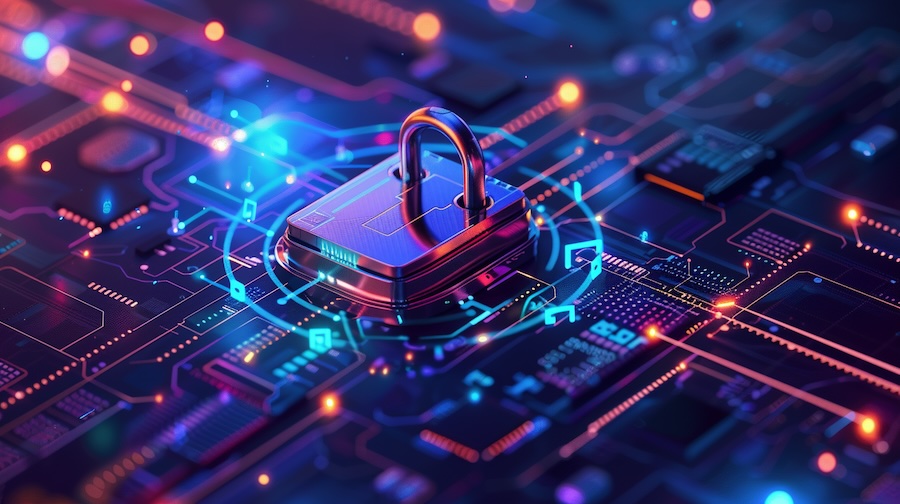We created this blog post for the EU-funded project “V2B: Creating NFT Opportunities on Metaverse for Art VET Trainees”, and our project reference number is 2022-1-DE02-KA210-VET-000080828. Coordinated by L4Y Learning for Youth GmbH in collaboration with Adana Cukurova Guzel Sanatlar and EMC Services Ltd, “Key Security Concerns in the Blockchain Space” is prepared related to the training framework in the introduction post.
The Blockchain technology has two important dimensions: distributed consensus and anonymity and it applies to any digital asset transaction exchanged digitally (online). It has the potential to revolutionize the digital transactions (past or present) by verifying it at any given point in the future by leveraging the distributed consensus model. Despite having great expectations from blockchain technology, there is a paucity of knowledge to understand the challenges, potential opportunities, and applications leading to its widespread adoption 1.
Blockchain technology has gained immense popularity as a decentralized and secure system for a variety of applications including cryptocurrencies, supply chain management, digital identities, and more.Blockchain offers several advantages but is not immune to security concerns. As technology evolves, threats and vulnerabilities develop that can compromise its integrity. This module addresses some of the key security concerns in the blockchain space. The post was created for learners who are interested in emerging technologies, digital inventions, and the future of online relations. You can also find more blog posts in our R2 category. It is one of the posts.
Learning Objectives
- Understanding the Fundamentals of Blockchain Technology
- Gaining Awareness on Blockchain Security
- Reviewing 51% Attacks and Consensus Mechanisms
- Raising Awareness on Smart Contract Security
- Reviewing Privacy Issues
- Understanding Interaction Between Different Blockchain Networks
Blockchain Security Concerns: Introduction
It would be appropriate to begin the unit by explaining what blockchain is. A blockchain is a shared database managed by a computer network instead of a single party. This decentralized structure allows for greater transparency and security, as each party in the chain can verify every transaction against the entire history of the blockchain.
The key to understanding how blockchain works is to think of it as a digital ledger. A central authority, such as a bank or the government, records and oversees transactions in traditional ledgers. In contrast, blockchains are decentralized, meaning there is no central authority that manages the ledger. Instead, the ledger is shared and decoupled between all parties in the chain.
Every time a new transaction takes place, it is recorded on the blockchain. All parties in the chain then use sophisticated mathematical algorithms to verify these transactions. A transaction cannot be changed or deleted after it has been verified. This creates a permanent and secure record of all transactions that take place on the blockchain.2
Let’s take a look at how attacks on blockchain technology are happening.Blockchain and data security are always an issue of concern to users. Blockchain technology also deals with vulnerabilities and is vulnerable to four types of attacks: phishing, redirection, Sybil and 51% attacks.
1. Phishing
A phishing attack is a type of cyberattack where an attacker impersonates a trusted entity in order to trick victims into revealing sensitive information, such as login credentials or financial information. Phishing attacks are often used to steal cryptocurrency from victims by sending them fake links that redirect them to malicious websites designed to look like legitimate exchanges or wallets.
These websites will then prompt the user to enter their login credentials, which the attacker can then use to gain access to their account and steal their cryptocurrency. This is why blockchain security salaries are high in many different countries because engineers and developers have to work really hard to avoid phishing.
Phishing is a type of cyberattack where attackers attempt to trick people into revealing sensitive information such as usernames, passwords, and credit card details. This is usually done through fraudulent emails or messages that appear to be from a legitimate source, such as a bank or social media platform. The goal of phishing is to steal personal information that can be used for identity theft or financial gain.
To avoid falling victim to phishing scams, it’s important to be cautious when opening emails or messages from unknown senders. Be wary of any requests for personal information, and never click on links or download attachments from suspicious sources. It’s also important to keep your computer and mobile devices up-to-date with the latest security patches and antivirus software.
If you receive a suspicious email or message, do not respond to it or click on any links. Instead, report it to the appropriate authorities and delete it from your inbox.
2. Routing Attack
Another type of attack that can occur in blockchain technology is a routing attack. This is when hackers intercept data as it’s transferred to internet service providers. By doing this, they can disrupt the network and prevent transactions from being completed. A routing attack is a type of cyberattack where an attacker sends fake routing updates, pretending to be a legitimate router. Another type of routing attack is called a source routing attack, where the sender of a packet specifies the route the packet travels through the network.
Routing attacks can be difficult to detect and prevent, but there are some measures that can be taken. For example, data can be encrypted before it’s sent, and node operators can monitor their networks for suspicious activity.
It’s important to be aware of these types of attacks and take appropriate measures to protect yourself and your network. Some ways to mitigate these risks include keeping your software up-to-date, using strong passwords, and being cautious when opening emails or messages from unknown senders.
3. Sybil Attack
A Sybil attack is a type of blockchain attack where hackers create and use many false identities to crowd the network and crash the system. This can be done by creating multiple accounts, computers, or IDs. Sybil attacks can reduce confidence in the blockchain as well as lead to financial losses. In order to prevent a Sybil attack, it is important to have strong security measures in place. This may include using digital signatures or IDs as well as maintaining a list of known IDs.
To mitigate the risks of a Sybil attack, it’s important to implement appropriate security measures such as identity verification and reputation systems. It’s also important to educate users about the risks of Sybil attacks and how to protect themselves from such attacks.
4. 51% Attack
A 51% attack is a type of blockchain attack where a group of miners or a single miner controls more than 50% of the network’s mining power. This control allows them to manipulate the ledger, which could lead to double-spending or other types of fraud. While 51% attacks are very rare, they are a serious security concern for blockchain security. In order to protect against them, it is important for blockchain networks to have a large and decentralized mining community. To mitigate the risks of a 51% attack, it’s important to implement appropriate security measures such as identity verification and reputation systems.
These are just a few of the many ways that can impact Blockchain cybersecurity and cause harm. (1)
Blockchain Security Tips and Best Practices
There are certain Blockchain security tips and practices that apply to everyone:
1. Implementing Two-factor Authentication
One of the most important aspects of security in the Blockchain space is two-factor authentication (2FA). Implementing 2FA adds an extra layer of security to your online accounts by requiring a second factor, in addition to your password, to log in. A hardware token, a biometric factor like your fingerprint or iris scan, or a one-time code generated by an authenticator app can all serve as this second factor.
While 2FA is not foolproof, it significantly increases the security of your online accounts and should be used whenever possible. In the blockchain space, 2FA is especially important due to the high value of digital assets and the often irreparable damage that a hack or theft can cause. Also, try to find reputable blockchain security audit companies that can identify any loopholes in the system and eliminate any vulnerabilities.
Two-factor authentication (2FA) is an advanced method of user authentication that adds another layer of security to traditional passwords. Here are some steps to implement 2FA:
1. Choose the right technology:
There are several 2FA technologies available, such as SMS-based authentication, mobile apps, and hardware tokens. Choose the one that best suits your needs and budget.
2. Educate your users:
It’s important to educate your users about the benefits of 2FA and how to use it. Provide clear instructions and training materials to help them get started.
3. Make it easy to use:
2FA should be easy to use and not create additional burden for users. Consider using single sign-on (SSO) solutions that allow users to sign in once and access multiple applications.
4. Monitor usage:
Monitor usage of 2FA to ensure that it is being used correctly and effectively. Identify any issues or areas for improvement and address them promptly.
5. Stay up-to-date:
Keep up-to-date with the latest security threats and vulnerabilities, and update your 2FA technology accordingly.
For more information on how to implement 2FA, check out this Microsoft Security Blog article3
2. Allow Listing Trusted Senders and Recipients
One of the best things you can do to secure your blockchain platform is to only allow trusted senders and receivers. This may seem like a no-brainer, but it’s incredibly important. By allowing only trusted entities to interact with the blockchain, you can dramatically reduce the chances of malicious activity. Of course, this doesn’t mean you should never allow new entities onto the blockchain.
Rather, it simply means that you should be very careful about who you allow access to. Take the time to verify the identity of each sender and receiver and ensure they are credible before allowing them onto the network.
Allowing users to list trusted senders and recipients is a security measure that can help protect against phishing scams and other cyber attacks. Here are some ways to implement this measure:
1. Tenant Allow/Block List: This is the most recommended option for allowing mail from trusted senders or domains. You can create allow entries for domains and email addresses, including spoofed senders.
2. Mail flow rules: Users can utilize mail flow rules to identify messages from trusted senders and take appropriate actions.
3. Outlook Safe Senders: In Outlook, users can add email addresses or domains they trust to the Safe Senders list.
4. IP Allow List: Users can configure the IP Allow List to permit email from specific IP addresses or ranges.
Mailing lists: You can add mailing lists to your safe senders list to ensure that you receive emails from trusted sources.
It’s important to educate users about the risks of phishing scams and other cyber attacks, and how to protect themselves from such attacks. For more information on how to implement these security measures, check out this Microsoft Learn article4
3. Keep your Software Up to Date
This entails installing security updates and patching any vulnerabilities as soon as users discover them.By staying on top of the latest security threats, you can help ensure that your blockchain network remains safe and secure. Additionally, it’s important to choose a reputable and reliable provider for your blockchain security needs. Look for a provider with a proven track record of keeping their networks safe and secure.
Keeping your software up-to-date is an important step in protecting your computer from security threats. Software updates often include security patches and fixes that block potential attacks and prevent unauthorized access to applications and their data. Here are some steps you can take to keep your software up-to-date:
1. Enable automatic updates: Most software applications have an option to enable automatic updates. This will ensure that your software is always up-to-date without requiring any manual intervention.
2. Check for updates regularly. If automatic updates are not available, make sure to check for updates regularly. Users typically accomplish this through the application’s settings or preferences menu.
3. Download updates from trusted sources: When downloading software updates, make sure to download them from trusted sources, such as the official website of the software vendor.
4. Keep your operating system up-to-date: In addition to keeping your software up-to-date, it’s also important to keep your operating system up-to-date with the latest security patches and updates.
5. Uninstall unused software: Uninstalling unused software can help reduce the attack surface of your computer and minimize the risk of security breaches.
4. Using VPNs – Virtual Private Network
While the use of VPNs is not new, it is gaining popularity due to increased awareness of online security threats. A VPN is a secure, encrypted connection between two devices. This connection can tunnel data traffic through an untrusted network like the internet.
By encrypting the data traffic, a VPN can help protect your information from malicious actors. In addition, a VPN can also help improve your privacy by hiding your real IP address and location. While there are many different VPN providers to choose from, selecting a reputable provider with strong encryption and security features is important.
A virtual private network (VPN) is a service that creates a secure and encrypted connection between your device and the internet. VPNs can help protect your online privacy and security by hiding your IP address, encrypting your internet traffic, and preventing third parties from tracking your online activities. Here are some benefits of using a VPN:
1. Online privacy: A VPN can help protect your online privacy by hiding your IP address and encrypting your internet traffic. This makes it more difficult for third parties to track your online activities.
2. Security: A VPN can help protect your online security by encrypting your internet traffic and preventing hackers from intercepting your data.
3. Using a VPN allows you to bypass geographic restrictions and access content that may be blocked in your region.
4. Safe public Wi-Fi: A VPN can help you stay safe on public Wi-Fi networks by encrypting your internet traffic and preventing others from intercepting your data.
5. Remote access: A VPN can allow you to securely access resources on a private network from a remote location.
When choosing a VPN provider, it’s important to consider factors such as speed, security, privacy policy, and ease of use.
5. Use Anti-Phishing Tools
Phishing attacks are becoming increasingly common and can be difficult to detect and prevent. An anti-phishing tool can help identify and block phishing attempts, keeping your blockchain safe. Additionally, it’s important to be aware of the signs of a phishing attack. Be suspicious of any email or message that asks you to click on a link or provide personal information. If you are sceptical about the legitimacy of an email, contact the sender to verify its authenticity. (1)
Phishing attacks are a common form of cybercrime that can lead to identity theft, financial loss, and other negative consequences. Anti-phishing tools can help protect you from these attacks by detecting and blocking phishing emails before they reach your inbox.
There are many anti-phishing tools available that offer different levels of protection and functionality.
Key Security Concerns of Blockchain Technology
Blockchain technology has become quite popular in recent years. Blockchain is a distributed ledger system and, therefore, much more secure than traditional databases. However, blockchain technology still has some security concerns. These concerns are:
Hacks: Blockchain networks are vulnerable to hacks. In 2016, hackers breached an Ethereum smart contract called DAO, stealing $50 million worth of cryptocurrencies.5
DDoS attacks: Blockchain networks are also vulnerable to DDoS attacks. DDoS attacks can slow down or stop a blockchain network, making it impossible to transact on the network.
Misinformation: It is possible to disseminate incorrect information using blockchain technology. For instance, individuals can store fake social media posts or news stories on the blockchain.
Censorship: Blockchain can be used for censorship. For example, a government can censor information stored on the blockchain.
Privacy: Blockchain can pose a threat to privacy. Because blockchain stores all transaction history. This may expose users’ financial and other sensitive information.
Blockchain Security Concerns: Conclusion
Despite these security concerns, blockchain technology is still a very secure technology. Developers regularly update and improve blockchain networks, making them more resistant to hacking. Developers also reinforce blockchain networks to strengthen them against DDoS attacks.
As blockchain technology becomes more widely used, security concerns grow. However, developers constantly update and develop blockchain networks, making them more secure.
References and Resources
- Upadhyay N., 2020 Demystifying blockchain: A critical analysis of challenges, applications and opportunities,International Journal of Information Management,Volume 54,102120, ISSN 0268-4012
https://doi.org/10.1016/j.ijinfomgt.2020.102120
↩︎ - Blockchain Security – All You Need to Know ↩︎
- https://www.microsoft.com/en-us/security/blog/2020/01/15/how-to-implement-multi-factor-authentication/ ↩︎
- https://learn.microsoft.com/en-us/microsoft-365/security/office-365-security/create-safe-sender-lists-in-office-365?view=o365-worldwide ↩︎
- A Hacking of More Than $50 Million Dashes Hopes in the World of Virtual Currency. The New York Times, 2016 ↩︎










